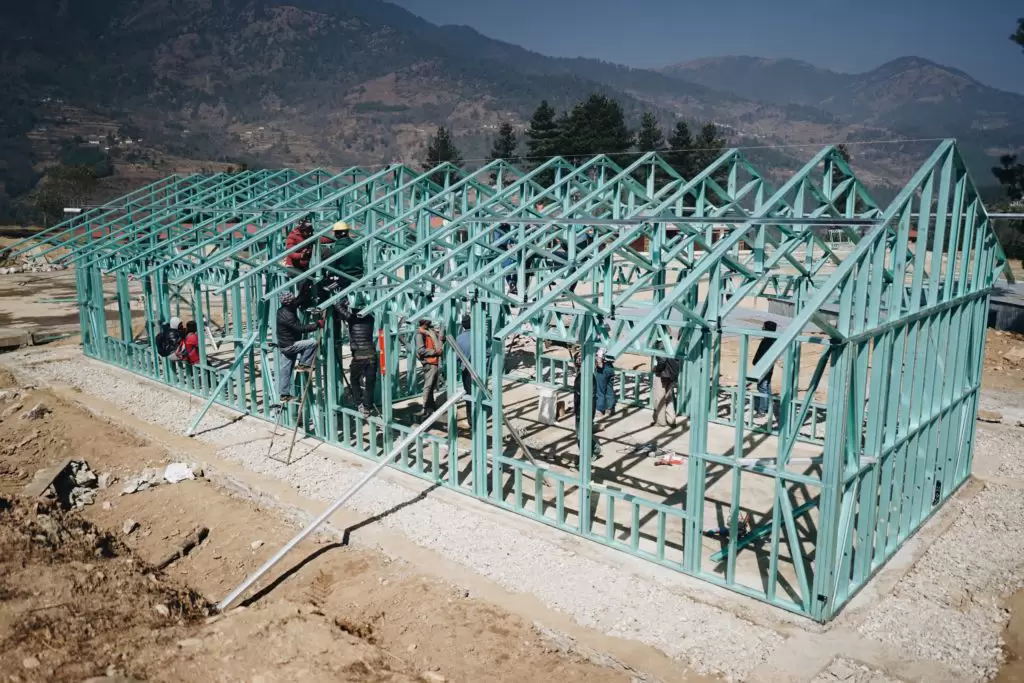It’s been three years since the Nepali earthquake that killed 9000 people and destroyed hundreds of schools and other vital infrastructure. A team of Australian engineers and architects has designed a lightweight structure that is getting local kids back into the classroom.
The lightweight design – commissioned by the Australian Himalayan Foundation (AHF) – has been put into action in 20 classrooms across five schools, including one for special-needs students.
The pro-bono team behind the design includes engineers from Taylor Thomson Whitting (TTW) and architects Ken McBryde (director of Sydney Architecture Studio), David Francis and Davenport-Campbell. The team swept the pool at the 2018 Good Design Awards – taking home the trophies for Gold Winner Engineering, Gold Winner Architectural and Winner Social Impact.
The judges praised the design team’s incorporation of the traditional skills of local Nepali communities, and the use of lightweight and modular earthquake-resistant design that could be transported by foot in the mountainous terrain.
“This project sets a benchmark for new ways of delivering buildings while having the highest values of environmental sustainability and safety,” the judges said.
Keeping things light
According to architect Ken McBryde, who has also designed cyclone-resistant shelters for remote communities in Vanuatu and structures for earthquake prone New Zealand, a lightweight structure was the primary design requirement for the project.
“The heavier something is the more it attracts earthquake loads,” McBryde told Architechtureau.
David Carolan, director of TTW, said the design was based on a conventional cold-rolled steel stud frame that could be broken into pieces that could be carried to remote mountainous locations by local Nepali porters.

This was supplemented by a locally laid low stone wall around the building perimeter, which serves the dual purpose of helping it fit in with traditional Nepali building practices and reinforcing the lightweight frame against strong winds.
Because the stone wall was low, it was unlikely to hurt anyone in the event of an earthquake, said McBryde.
The design also features large eaves to provide shelter from seasonal rains, rainwater tanks and gables that can be crafted by local artisans.
Cladding for the classroom’s roof and walls can be corrugated iron, or another culturally appropriate material.
TTW said the design was a significant improvement on the former local classrooms, which were built of stone and mud and not seismically resistant. The classrooms can now double as an emergency earthquake shelter for local communities.
According to Tshering Lama O’Gorman, head of programs with AHF, the classroom project has been the most challenging, yet satisfying, project he has worked on.
“Rebuilding schools in a remote part of Nepal with a highly skilled design team was a massive effort. Partnering with local schools and communities, and seeing the positive benefits instantly impact their daily lives is a true blessing for all involved,’’ O’Gorman said.